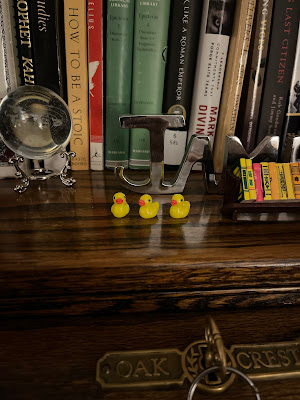The Tattooed Sailor
- Get link
- X
- Other Apps
Spend 15 minutes in the Classics
“. . . the vessel had two English sailors . . . One of them I shall always remember as the best specimen of the thoroughbred English sailor that I ever saw. He had been to sea from a boy, having served a regular apprenticeship of seven years, as all English sailors are obliged to do, and was then about four or five and twenty. He was tall; but you only perceived it when he was standing by the side of others, for the great breadth of his shoulders and chest made him appear but little above the middle height. His chest was as deep as it was wide; his arm like that of Hercules; and his hand ‘the fist of a tar—every hair a rope-yarn.” With all this he had one of the pleasantest smiles I ever saw. His cheeks were of a handsome brown; his teeth brilliantly white; and his hair, of a raven black, waved in loose curls all over his head, and fine, open forehead; and his eyes he might have sold to a duchess at the price of diamonds, for their brilliancy. As for their color, they were like the Irishman’s pig, which would not stay to be counted, every change of position and light seemed to give them a new hue; but their prevailing color was black, or nearly so. Take him with his well-varnished black tarpaulin stuck upon the back of his head; his long locks coming down almost into his eyes; his white duck trowsers and shirt; blue jacket; and black kerchief, tied loosely round his neck; and he was a fine specimen of manly beauty. On his broad chest he had stamped with India ink “Parting moments;”—a ship ready to sail; a boat on the beach; and a girl and her sailor lover taking their farewell. Underneath were printed the initials of his own name, and two other letters, standing for some name which he knew better than I did. This was very well done, having been executed by a man who made it his business to print with India ink, for sailors, at Havre. On one of his broad arms, he had the crucifixion, and on the other the sign of the “foul anchor.” He was very fond of reading, and we lent him most of the books which we had in the forecastle . . .”
Richard Henry Dana, Jr. (1815–1882). “Two Years before the Mast.” Vol. 23, pp. 77-86of The Harvard Classics
- Get link
- X
- Other Apps

